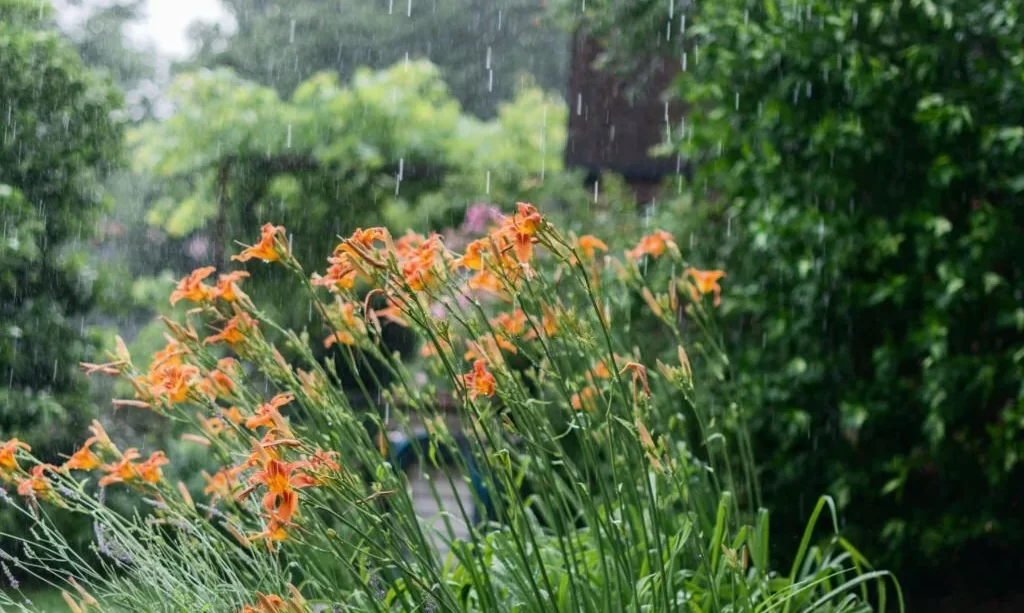Roundup, a widely recognized herbicide, has become a trusted ally in the ongoing battle against stubborn weeds in gardens and landscapes. It’s a powerful solution that homeowners and professionals alike rely on to keep unwanted vegetation at bay. However, like any tool, using Roundup effectively requires a good understanding of its action and the potential challenges it may face. One common question that arises in this context is, “How long does Roundup need to set before rain?”. In this article, we will explore the dynamics of Roundup application, the science behind its weed control prowess, and the impact that rain can have on its effectiveness.
Roundup and Its Action
Before we dive into the rain-related aspects of Roundup, let’s grasp what this herbicide is all about. Roundup contains glyphosate as its active ingredient, a chemical renowned for its potent weed control capabilities. When applied to the leaves of weeds, glyphosate is absorbed and systematically travels down to the roots, effectively disrupting the plant’s growth processes. This action is what makes Roundup so effective in eradicating unwanted vegetation. However, the key to success with Roundup lies in the correct application and timing, factors that play a significant role in its efficacy. Understanding how Roundup works is crucial to appreciating the importance of allowing it the right amount of time to take action.
Rain and Its Impact on Roundup
Rain, while essential for the growth of crops and gardens, can be a double-edged sword when it comes to Roundup application. On one hand, it can be beneficial in the case of systemic herbicides like Roundup, as it can help move the herbicide throughout the plant. However, timing is crucial. If rain falls too soon after applying Roundup, it can wash the herbicide off the leaves and soil, diluting its potency and potentially rendering it less effective. This dilution effect can significantly reduce the weed-killing power of the herbicide, which is why many gardeners and professionals ask how long Roundup needs to set before rain. Finding the right balance between getting enough rain to activate the herbicide and avoiding a downpour shortly after application is the key to maximizing Roundup’s effectiveness.
Ideal Waiting Period Before Rain
Determining the ideal waiting period after applying Roundup before rain arrives is a critical aspect of successful weed control. While the exact timing can vary depending on factors like weather conditions, the type of weeds you’re targeting, and the specific Roundup product used, a general guideline is to allow at least six hours for Roundup to set before expecting rain. This window of time gives the herbicide an opportunity to be absorbed by the weed’s foliage and begin its journey down to the root system. It also provides a buffer to guard against the detrimental effects of rain if it happens sooner than expected.
However, it’s essential to be flexible and keep an eye on the weather forecast. If there’s a possibility of rain within the next six hours, it may be wise to delay your Roundup application. Conversely, if you’ve just treated your weeds and rain is expected a few hours later, try to protect the treated area from rain using covers or shelters. Remember that the goal is to allow Roundup to work its magic and not wash away with the rain.
Dealing with Unexpected Rainfall
Nature can be unpredictable, and unexpected rain showers can happen. So, what should you do if rain catches you off guard shortly after applying Roundup? First, don’t panic. Assess the situation and the amount of rain that has fallen. If it’s just a light drizzle or brief shower, the impact on your Roundup application might be minimal, and the herbicide could still be effective. However, if a heavy downpour occurs immediately after application, it’s wise to consider reapplication.
In cases of unexpected rainfall, wait for the treated area to dry completely before reapplying Roundup. Keep in mind that it’s essential to adhere to Roundup’s label instructions regarding reapplication intervals. Additionally, observe your treated weeds in the days following unexpected rain. If they show signs of renewed growth, it might be necessary to treat them again.
Always be prepared by checking weather forecasts before Roundup application and have a plan in place for dealing with rain. A little rain doesn’t have to be a setback if you’re well-informed and ready to act if the weather takes an unexpected turn. Proper planning ensures that you make the most of Roundup’s weed control abilities while minimizing the influence of rain.
Maximizing Roundup Effectiveness
To maximize the effectiveness of Roundup in your weed control efforts, there are several additional steps you can take beyond considering rain and timing. First, choose the right Roundup product for your specific needs. Different formulations are available for various applications, such as general weed control, brush and woody plant control, or lawn weed killing. Selecting the appropriate product can significantly impact the outcome.
Second, follow the manufacturer’s instructions for mixing and application. Accurate measurement and thorough mixing of Roundup are essential to ensure that you’re using the right concentration for your target weeds. Proper application techniques, such as using a sprayer with fine droplets to cover the leaves evenly, contribute to better results.
Finally, pay attention to the condition of your weeds. Roundup works best on healthy, actively growing weeds. If weeds are stressed, damaged, or in a state of dormancy, they may not respond as effectively to the herbicide. Consider treating your weeds during their active growth phase for optimal results.
Incorporating these practices into your weed control routine will help you make the most of Roundup’s potential and enhance its weed-killing power.
Conclusion
In the world of weed control, Roundup stands as a powerful ally, and understanding the dynamics of its application is crucial for success. The question of how long Roundup needs to set before rain is just one part of the equation. By comprehending the science behind Roundup’s action, considering rain’s impact, and observing ideal waiting periods, you can harness the herbicide’s effectiveness while mitigating the influence of rainfall.
Dealing with unexpected rain showers requires flexibility and a readiness to reapply when necessary. To truly maximize Roundup’s potential, select the right product, mix and apply it accurately, and target healthy, actively growing weeds.
In your ongoing battle against stubborn weeds, remember that Roundup is a valuable tool, but success depends on your knowledge and thoughtful application. With the right strategies in place, you can achieve a weed-free landscape while keeping rain’s unpredictability in check.



